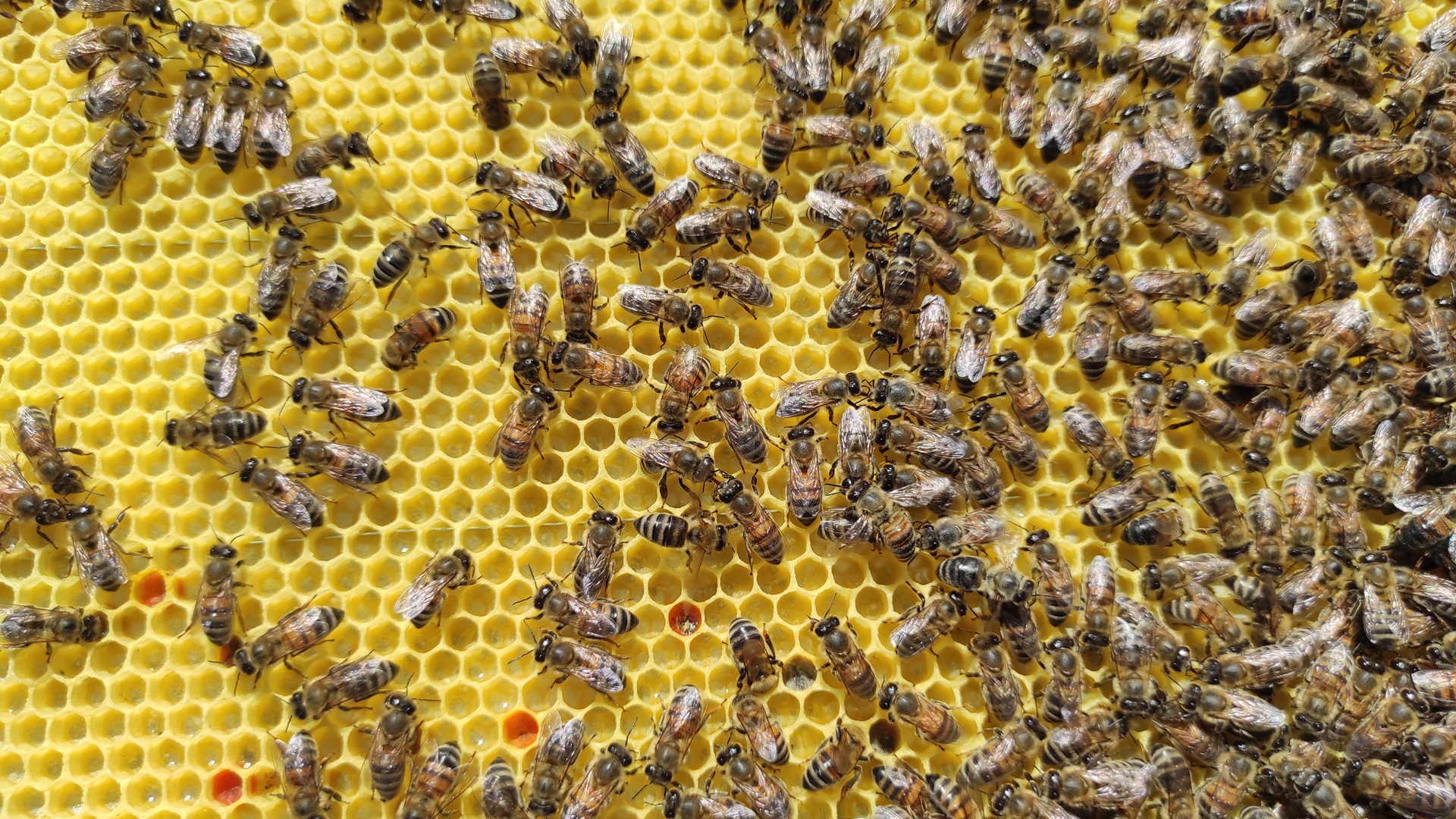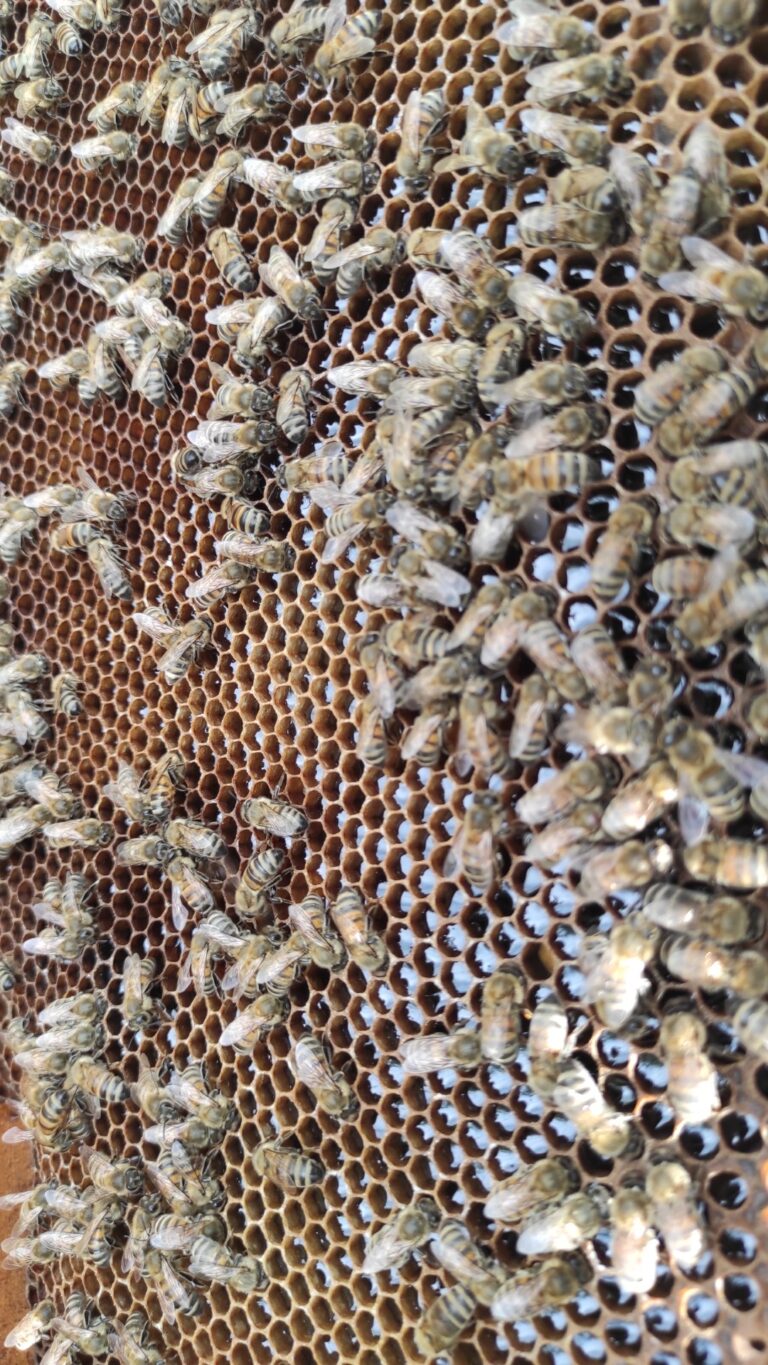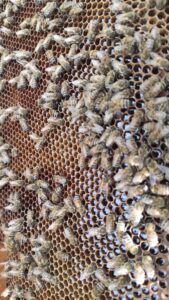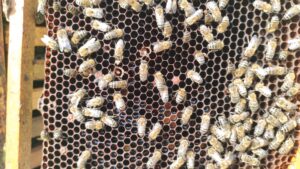Viral infections represent one of the most persistent and damaging threats to bee colony health worldwide. While traditional treatments often provide temporary relief, many viral pathogens can persist in the hive environment, creating cycles of reinfection that weaken colonies over time. The shook swarm method offers beekeepers a powerful biological solution—a complete environmental reset that can break these viral cycles and restore colony health. This comprehensive approach to viral management has proven particularly effective against specific pathogens that resist conventional treatments.
Understanding Viral Persistence in Bee Colonies
Bee viruses create complex challenges for colony management because they establish multiple reservoirs within the hive ecosystem. Unlike bacterial infections that may respond to antibiotic treatments, viruses require different management strategies focused on breaking transmission cycles and eliminating environmental persistence.
Viral particles can survive in various hive components for extended periods. Wax comb serves as a primary reservoir, harboring viral RNA and active particles within cell walls and honey stores. Pollen deposits, particularly bee bread, can maintain viral viability for months under proper storage conditions. Even seemingly clean equipment may harbor infectious particles in microscopic crevices and organic residues.
The persistence of viruses in the hive environment creates a continuous challenge for colony immune systems. Newly emerged bees encounter contaminated surfaces immediately, while nurse bees transfer viral particles through food sharing and grooming behaviors. This environmental contamination makes traditional spot treatments ineffective, as reinfection occurs rapidly after treatment cessation.
Why Antibiotics Fall Short in Pathogen Management
While antibiotics may seem like an obvious solution for bacterial infections like American and European Foulbrood, they represent a fundamentally flawed approach to bee disease management. Antibiotics only suppress bacterial growth temporarily without eliminating spores or addressing environmental contamination. In the case of AFB, Paenibacillus larvae spores remain completely unaffected by antibiotic treatments, lying dormant in contaminated comb until conditions favor reactivation.
The use of antibiotics in beehives creates additional problems that compound the original disease issues. Antibiotic residues accumulate in honey and wax, potentially affecting human health and bee physiology. More critically, repeated antibiotic use promotes the development of resistant bacterial strains, making future treatments increasingly ineffective. The bacterial suppression achieved by antibiotics often masks ongoing infections rather than eliminating them, leading beekeepers to believe colonies are healthy when spore loads remain dangerously high.
Furthermore, antibiotics provide no benefit whatsoever against viral pathogens, which represent the majority of serious bee diseases including DWV, CBPV, and IAPV. These viral infections require completely different management approaches focused on environmental elimination and breaking transmission cycles—exactly what the shook swarm method provides. The biological reset achieved through shook swarming addresses both bacterial spores and viral particles simultaneously, offering comprehensive pathogen elimination that no antibiotic treatment can match.
The Shook Swarm Method: A Biological Reset
The shook swarm method works by completely separating bees from their contaminated environment, forcing them to rebuild their entire infrastructure from scratch. This process mimics natural swarming behavior, where bees abandon old comb and establish new colonies in clean environments.
The technique’s effectiveness stems from its comprehensive approach to viral elimination. By removing all environmental reservoirs simultaneously, the method prevents the immediate reinfection that often follows other treatment approaches. The physical separation creates a clean slate that allows colony immune systems to recover without constant viral pressure.
The rebuilding process itself contributes to viral elimination. Wax production requires significant metabolic energy, which may enhance immune function in worker bees. The temporary brood break that accompanies comb reconstruction interrupts viral replication cycles that depend on developing larvae. Additionally, the stress of rebuilding may trigger beneficial changes in gene expression related to immune function and pathogen resistance.
Deformed Wing Virus (DWV): Critical Intervention
Deformed Wing Virus represents one of the most devastating viral infections affecting bee colonies globally. This virus, primarily transmitted by Varroa destructor mites, causes wing deformities, shortened lifespans, and severely compromised colony function. The shook swarm method provides critical intervention capabilities for DWV-infected colonies.
Criticality Level: ESSENTIAL
The shook swarm method is essential for managing severe DWV infections because the virus establishes persistent reservoirs in brood comb that resist conventional treatments. DWV can survive in wax cells for extended periods, creating continuous reinfection cycles even after successful mite control. The method becomes particularly critical when:
- Colony populations show high percentages of deformed bees
- Viral loads exceed treatment thresholds despite mite control
- Multiple generations of brood show consistent deformation
- Colony productivity declines significantly despite adequate resources
The timing of shook swarm intervention for DWV requires careful consideration of viral load dynamics. Early intervention, when viral levels are moderate but increasing, often produces better outcomes than waiting until severe symptoms appear. The method works most effectively when combined with simultaneous varroa control, as eliminating the vector prevents immediate reinfection of the clean environment.
Success rates for DWV management using shook swarms typically exceed 80% when properly implemented during optimal timing windows. The method’s effectiveness stems from its ability to eliminate both active viral particles and dormant genetic material that may persist in comb structures.
Black Queen Cell Virus (BQCV): Moderate Priority
Black Queen Cell Virus primarily affects developing queens and worker larvae, causing queen cell failure and reduced brood viability. While less immediately devastating than DWV, BQCV can significantly impact colony reproductive success and long-term sustainability.
Criticality Level: MODERATE
The shook swarm method provides moderate priority benefits for BQCV management. The virus often resolves naturally with improved colony conditions, but persistent infections may require intervention. The method becomes valuable when:
- Queen replacement attempts consistently fail due to larval death
- Brood viability remains low despite optimal nutrition
- BQCV persists alongside other viral infections
- Colony expansion efforts are hampered by reproductive failures
BQCV management through shook swarms requires specific timing considerations. The method works best when implemented during periods of active queen rearing, allowing colonies to establish new queens in clean environments. Success rates for BQCV elimination typically range from 60-75%, with higher success rates achieved when combined with proper nutrition management.
The decision to use shook swarms for BQCV should consider alternative management options, including requeening, nutritional supplementation, and stress reduction. The method becomes more critical when these alternatives fail to resolve persistent infections.
Chronic Bee Paralysis Virus (CBPV): High Priority
Chronic Bee Paralysis Virus causes distinctive behavioral changes in adult bees, including trembling, paralysis, and abnormal clustering behaviors. The virus spreads rapidly through direct contact and can devastate colonies within weeks of symptom appearance.
Criticality Level: HIGH
The shook swarm method provides high-priority intervention for CBPV because the virus spreads rapidly through colony populations and can cause complete colony collapse. Environmental persistence of CBPV makes conventional treatments ineffective, requiring comprehensive environmental elimination. The method becomes critical when:
- Adult bees show trembling or paralysis symptoms
- Abnormal clustering behaviors appear at hive entrances
- Rapid population declines occur without obvious causes
- Dead bees accumulate with characteristic shiny, hairless appearance
CBPV management requires immediate implementation of shook swarm techniques to prevent total colony loss. The virus’s rapid spread through adult populations makes timing critical—intervention must occur within days of symptom recognition. Success rates approach 85% when implemented promptly, but decline rapidly with delayed intervention.
The method’s effectiveness for CBPV stems from its ability to separate infected bees from contaminated surfaces immediately. The virus requires direct contact for transmission, making physical separation particularly effective for breaking infection cycles.
American Foulbrood (AFB): CRITICAL – MANDATORY INTERVENTION
American Foulbrood, caused by Paenibacillus larvae, represents the most serious bacterial disease affecting honey bee colonies. While technically bacterial rather than viral, AFB creates spores that persist in the hive environment indefinitely, making it one of the most critical applications for the shook swarm method.
Criticality Level: CRITICAL – MANDATORY
The shook swarm method is absolutely critical and often mandatory by law for AFB management. AFB spores can survive for decades in contaminated equipment, making complete environmental elimination essential. The method becomes legally required when:
- Laboratory confirmation of AFB occurs in any colony
- Characteristic rope test results indicate AFB presence
- Regulatory authorities mandate treatment protocols
- Cross-contamination threatens entire apiaries
AFB management through shook swarms requires immediate implementation upon diagnosis. Many jurisdictions legally require the destruction of contaminated equipment and implementation of shook swarm techniques for affected colonies. The method must be combined with complete equipment sterilization or replacement.
Success rates for AFB elimination approach 95% when proper protocols are followed, including complete environmental sterilization. However, failure to implement proper techniques can result in persistent spore contamination and regulatory consequences. The spores’ extreme longevity makes this the most critical application of the shook swarm method.
Post-treatment monitoring for AFB requires extended surveillance, as spores may activate months or years after apparent elimination. Regular inspection and testing protocols must continue indefinitely following AFB incidents.
European Foulbrood (EFB): HIGH PRIORITY
European Foulbrood, caused by Melissococcus plutonius, affects developing larvae and can severely impact colony development. Unlike AFB, EFB bacteria do not form persistent spores, but the infection can establish chronic patterns that resist conventional treatments.
Criticality Level: HIGH PRIORITY
The shook swarm method provides high-priority intervention for persistent EFB infections. While EFB may resolve with improved colony conditions, chronic infections require comprehensive environmental management. The method becomes critical when:
- EFB symptoms persist despite antibiotic treatment
- Multiple generations of brood show consistent infection
- Colony development remains stunted over extended periods
- EFB occurs in combination with stress factors or poor conditions
EFB management through shook swarms works particularly well because the bacteria do not form persistent spores like AFB. The method can achieve complete elimination by removing contaminated brood comb and food stores. Success rates typically exceed 85% when implemented during appropriate timing.
The technique becomes especially valuable for EFB when combined with colony strengthening measures, including requeening, nutritional supplementation, and stress reduction. Unlike AFB, EFB management allows for more flexible timing and can be coordinated with routine management activities.
Regulatory requirements for EFB vary significantly between jurisdictions, but the shook swarm method often provides the most reliable elimination approach for persistent infections.
Sacbrood Virus: Moderate to Low Priority
Sacbrood virus affects developing larvae, causing them to die before pupation and form characteristic fluid-filled sacs. While visible and concerning, sacbrood typically resolves naturally with improved colony conditions and rarely threatens colony survival.
Criticality Level: MODERATE TO LOW
The shook swarm method provides moderate to low priority benefits for sacbrood management. The virus often resolves through natural colony processes, but persistent infections may impact colony development. The method becomes valuable when:
- Sacbrood symptoms persist despite optimal colony conditions
- Multiple generations of brood show consistent infection
- Sacbrood occurs alongside other viral infections
- Colony development stagnates due to reduced brood viability
Sacbrood management rarely requires emergency intervention through shook swarms. The method becomes more valuable as a preventive measure during routine colony management or when addressing multiple viral infections simultaneously. Success rates for sacbrood elimination typically exceed 90%, but the necessity for intervention remains questionable in most cases.
The decision to implement shook swarms for sacbrood should consider the virus’s typically self-limiting nature and the potential stress of the procedure. Alternative management approaches, including improved ventilation, nutrition, and stress reduction, often provide adequate resolution without intensive intervention.
Israeli Acute Paralysis Virus (IAPV): High Priority
Israeli Acute Paralysis Virus causes rapid adult bee mortality and can lead to complete colony collapse within days. The virus spreads through multiple pathways and establishes persistent infections that resist conventional treatments.
Criticality Level: HIGH
The shook swarm method provides high-priority intervention for IAPV due to the virus’s rapid progression and high mortality rates. Environmental persistence makes conventional treatments ineffective, requiring comprehensive environmental elimination. The method becomes critical when:
- Rapid adult bee mortality occurs without obvious causes
- Dead bees accumulate around hive entrances
- Colony populations decline dramatically within days
- Surviving bees show signs of paralysis or disorientation
IAPV management requires immediate implementation of shook swarm techniques to prevent total colony loss. The virus’s rapid progression makes timing absolutely critical—intervention must occur within 24-48 hours of symptom recognition. Success rates exceed 75% with immediate intervention but decline rapidly with any delay.
The method’s effectiveness for IAPV requires perfect execution and immediate environmental isolation. Any contaminated equipment or delayed implementation significantly reduces success rates and may result in complete colony loss.
Kashmir Bee Virus (KBV): High Priority
Kashmir Bee Virus, closely related to IAPV, causes similar rapid mortality in adult bees and can devastate colonies within days. The virus often remains dormant until triggered by stress factors, making detection and treatment challenging.
Criticality Level: HIGH
The shook swarm method provides high-priority intervention for KBV due to its rapid progression and high mortality rates. The virus’s ability to remain dormant until activated by stress makes environmental elimination particularly important. The method becomes critical when:
- Sudden adult bee mortality occurs following stress events
- Colony populations collapse rapidly without obvious causes
- Surviving bees show paralysis or disorientation symptoms
- Environmental triggers activate dormant infections
KBV management requires immediate shook swarm implementation to prevent total colony loss. The virus’s rapid progression and environmental persistence make timing absolutely critical. Success rates approach 80% with immediate intervention but require perfect execution and complete environmental isolation.
Varroa-Associated Viral Complex
Many viral infections occur in complex interactions with Varroa destructor mites, creating multi-pathogen challenges that require comprehensive management approaches. The shook swarm method provides particular value for managing these complex infections.
Criticality Level: ESSENTIAL
The shook swarm method becomes essential when managing varroa-associated viral complexes because conventional treatments often fail to address all pathogen components simultaneously. The method becomes critical when:
- Multiple viral infections occur simultaneously
- Varroa treatment fails to reduce viral loads
- Colonies show symptoms of multiple viral pathogens
- Conventional treatments provide only temporary relief
Varroa destructor: HIGH PRIORITY – INTEGRATED APPROACH
Varroa destructor represents the most significant parasitic threat to honey bee colonies worldwide. While not eliminated directly by the shook swarm method, this parasitic mite benefits significantly from the technique when used as part of integrated management strategies.
Criticality Level: HIGH PRIORITY – INTEGRATED APPROACH
The shook swarm method provides high-priority benefits for varroa management, not by eliminating adult mites, but by disrupting their reproductive cycle and reducing overall mite loads. The method becomes particularly valuable when:
- Varroa populations exceed treatment thresholds despite chemical interventions
- Mite-resistant populations develop following repeated treatments
- Colonies show signs of varroa-associated viral infections
- Brood interruption is needed to break reproductive cycles
The effectiveness of shook swarms against varroa stems from the temporary brood break that occurs during comb reconstruction. Adult varroa mites require sealed brood cells for reproduction, and the 3-4 week period without capped brood significantly reduces mite reproductive success. During this time, existing mites remain on adult bees where they become more susceptible to contact treatments.
Combining shook swarms with immediate varroa treatments maximizes effectiveness. The method creates optimal conditions for applying contact miticides, as mites cannot hide in sealed brood cells. Success rates for integrated varroa management exceed 90% when shook swarms are combined with appropriate chemical or biological treatments.
The timing of varroa-focused shook swarms requires careful consideration of seasonal mite population dynamics. Implementation during late spring or early summer provides maximum impact on annual mite reproduction cycles, preventing population explosions during critical colony development periods.
Nosema spp.: MODERATE PRIORITY
Nosema apis and Nosema ceranae represent significant parasitic challenges for bee colonies, causing intestinal infections that weaken individual bees and reduce colony productivity. The shook swarm method provides moderate benefits for nosema management through environmental sanitation.
Criticality Level: MODERATE PRIORITY
The shook swarm method offers moderate priority benefits for persistent nosema infections by eliminating environmental spore reservoirs. The method becomes valuable when:
- Nosema spore counts remain high despite favorable weather conditions
- Colonies show persistent symptoms including dysentery and reduced activity
- Environmental contamination perpetuates infection cycles
- Multiple colonies in the same apiary show chronic nosema issues
Nosema spores can persist in comb and hive components for extended periods, creating environmental reservoirs that maintain infection pressure even after individual bees recover. The shook swarm method eliminates these reservoirs by providing completely clean environments for colony recovery.
The technique’s effectiveness for nosema management depends heavily on timing and environmental conditions. Implementation during periods of active flight and good weather allows bees to defecate properly and avoid recontamination. Success rates typically range from 65-80%, with higher success achieved when combined with environmental management improvements.
Post-treatment management for nosema requires ongoing attention to factors that predispose colonies to infection, including moisture control, adequate ventilation, and stress reduction. The shook swarm provides a clean start, but long-term success depends on maintaining optimal colony conditions.
Tracheal Mites (Acarapis woodi): LOW TO MODERATE PRIORITY
Tracheal mites infest the respiratory system of adult honey bees, causing reduced flight capacity and shortened lifespans. While less common than varroa, tracheal mite infestations can significantly impact colony health in affected regions.
Criticality Level: LOW TO MODERATE PRIORITY
The shook swarm method provides low to moderate priority benefits for tracheal mite management, primarily through the demographic changes that occur during colony rebuilding. The method becomes valuable when:
- Tracheal mite levels exceed treatment thresholds
- Colonies show reduced flight activity and foraging efficiency
- Chemical treatments prove ineffective or unavailable
- Environmental conditions favor mite population growth
The effectiveness of shook swarms against tracheal mites relates to the age structure changes that occur during comb reconstruction. Tracheal mites primarily infest young bees during their first few days of life, and the demographic shift toward older bees during rebuilding reduces new infestation opportunities.
Success rates for tracheal mite reduction through shook swarms typically range from 40-60%, making this a supplementary rather than primary treatment approach. The method works best when combined with other management strategies including genetic selection for resistant stock and environmental modifications.
Small Hive Beetles (Aethina tumida): LOW PRIORITY – LIMITED EFFECTIVENESS
Small hive beetles represent a significant pest problem in many regions, though their impact varies considerably based on climate and colony strength. The shook swarm method provides limited benefits for beetle management and may actually increase vulnerability in some situations.
Criticality Level: LOW PRIORITY – LIMITED EFFECTIVENESS
The shook swarm method offers limited effectiveness for small hive beetle management and should be used cautiously in beetle-prone areas. The method may become counterproductive when:
- Beetle populations are high in the surrounding environment
- Colonies lack sufficient strength to defend fresh comb
- Environmental conditions favor rapid beetle reproduction
- Alternative beetle management strategies are available
The temporary weakness that follows shook swarm implementation can actually increase colony vulnerability to beetle invasion. Fresh comb and reduced bee populations create ideal conditions for beetle establishment, potentially worsening infestations rather than improving them.
When beetle pressure is moderate and colony strength is adequate, shook swarms may provide some benefits by removing contaminated comb that harbors beetle eggs and larvae. However, this benefit is typically outweighed by the increased vulnerability during the rebuilding period.
Beetle management should focus on prevention and direct control methods rather than relying on shook swarm techniques. The method should only be considered for beetle issues when combined with immediate beetle control measures and adequate colony strength.
Wax Moths (Galleria mellonella): LOW PRIORITY
Wax moths typically indicate underlying colony weakness rather than serving as primary pathogens. The shook swarm method may provide some benefits for severe wax moth infestations, but addressing root causes remains more important.
Criticality Level: LOW PRIORITY
The shook swarm method provides low priority benefits for wax moth management by removing infested comb and forcing colony reorganization. The method becomes marginally valuable when:
- Wax moth damage is extensive throughout the hive
- Colony strength is insufficient to defend existing comb
- Comb replacement is needed for other reasons
- Moths have established breeding cycles within the hive
Wax moth issues typically resolve naturally when colony strength improves and environmental conditions become less favorable for moth development. The shook swarm method addresses symptoms rather than causes, making it a secondary consideration for moth management.
Success in wax moth control depends more on colony strengthening, proper ventilation, and reducing excess space than on comb replacement. The shook swarm method should only be considered when moth damage is so extensive that comb replacement becomes necessary for other reasons.
Implementation Priorities and Decision Framework
The decision to implement shook swarm techniques should follow a structured assessment framework based on viral identification, infection severity, and colony conditions. Priority levels guide intervention timing and resource allocation.
Essential Priority Viruses (DWV, Varroa-associated complexes) require immediate shook swarm implementation regardless of colony condition or seasonal timing. These infections threaten colony survival and resist conventional treatments.
High Priority Viruses (CBPV, IAPV, KBV) require rapid shook swarm implementation within 24-48 hours of symptom recognition. Delayed intervention significantly reduces success rates and may result in colony loss.
Moderate Priority Viruses (BQCV) benefit from shook swarm intervention but allow time for assessment and planning. Alternative treatments may provide adequate resolution in some cases.
Low Priority Viruses (Sacbrood) rarely require shook swarm intervention unless combined with other infections or persistent despite optimal colony conditions.
Monitoring and Assessment Protocols
Effective viral management requires systematic monitoring protocols to identify infections early and assess treatment effectiveness. Regular sampling and testing provide objective data for intervention decisions.
Visual assessment protocols should include regular examination of adult bee behavior, brood patterns, and physical abnormalities. Standardized scoring systems help quantify infection severity and track treatment progress over time.
Laboratory testing provides definitive viral identification and quantification. PCR-based testing can detect viral RNA even in asymptomatic colonies, enabling preventive intervention before severe symptoms develop.
Post-treatment monitoring should continue for multiple generations to confirm viral elimination and prevent reinfection. Regular assessment helps identify successful treatments and refine management protocols.
Integration with Comprehensive Viral Management
The shook swarm method works best when integrated into comprehensive viral management programs that address multiple risk factors simultaneously. Successful programs combine environmental management, vector control, and colony strengthening strategies.
Preventive measures remain essential even after successful viral elimination. These include maintaining optimal colony spacing, implementing effective varroa control, ensuring adequate nutrition, and minimizing stress factors that may trigger viral activation.
Record keeping becomes crucial for tracking viral management success and identifying patterns that inform future intervention decisions. Detailed documentation helps refine protocols and identify which viral infections respond best to shook swarm treatment.
Economic Impact of Viral Management
The economic benefits of effective viral management through shook swarm techniques often exceed the initial investment costs. Preventing colony losses saves replacement costs and maintains productive capacity for honey production and pollination services.
Cost-benefit analyses should consider both direct treatment costs and indirect benefits including reduced medication requirements, improved colony survival, and enhanced productive capacity. The method’s effectiveness in preventing total colony loss often justifies implementation costs even for high-priority cases.
Commercial operations may achieve economies of scale by implementing shook swarm techniques systematically across multiple colonies, particularly when combined with other management activities like equipment replacement or queen breeding programs.
Conclusion
The shook swarm method provides beekeepers with a powerful tool for managing viral infections that resist conventional treatments. Understanding the critical priority levels for different viral pathogens enables informed decision-making about when and how to implement this intensive management technique.
While not every viral infection requires shook swarm intervention, the method becomes essential for managing severe infections that threaten colony survival. Proper assessment, timing, and implementation can achieve success rates exceeding 80% for most viral pathogens, providing colonies with the clean environment they need to recover and thrive.
The technique’s effectiveness depends on understanding each viral pathogen’s unique characteristics and implementing appropriate intervention strategies. By matching intervention intensity to viral severity, beekeepers can optimize resource allocation while maintaining healthy, productive colonies.



